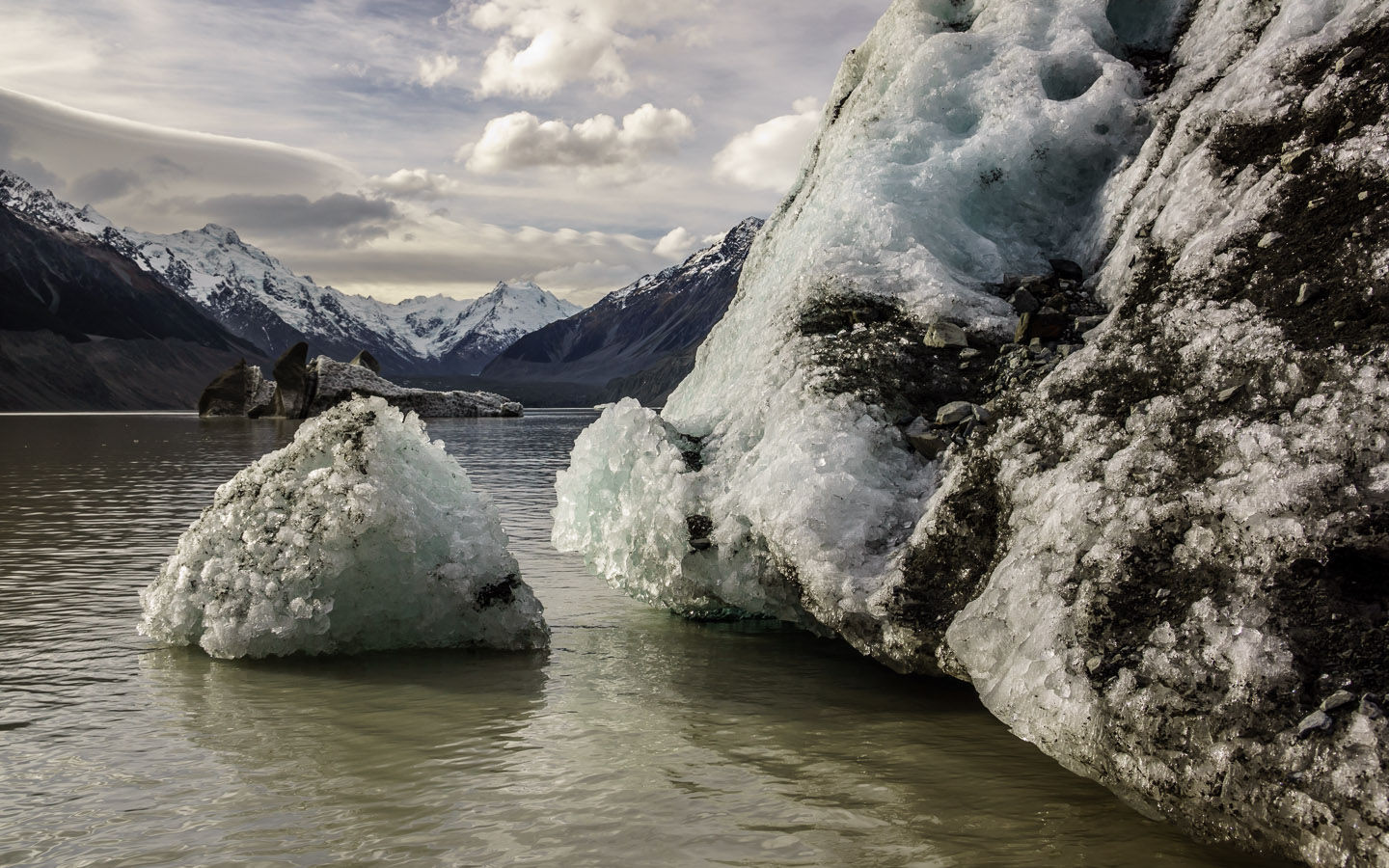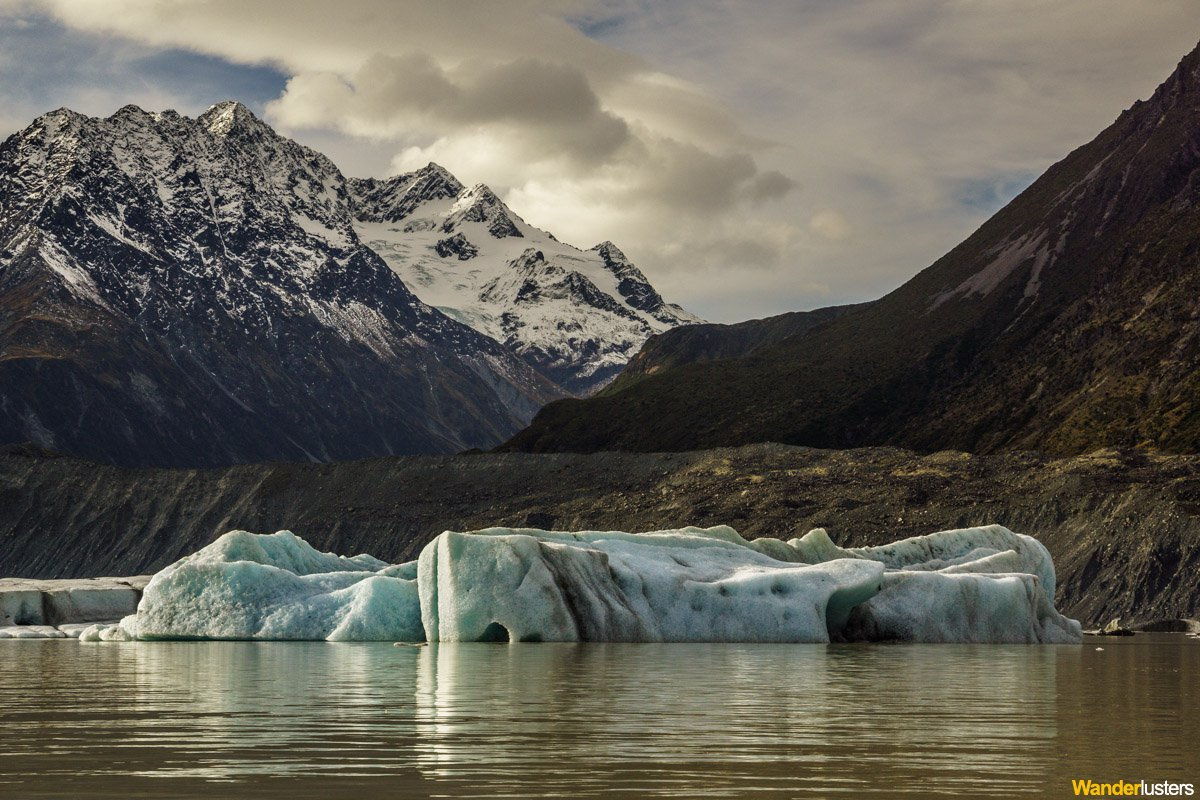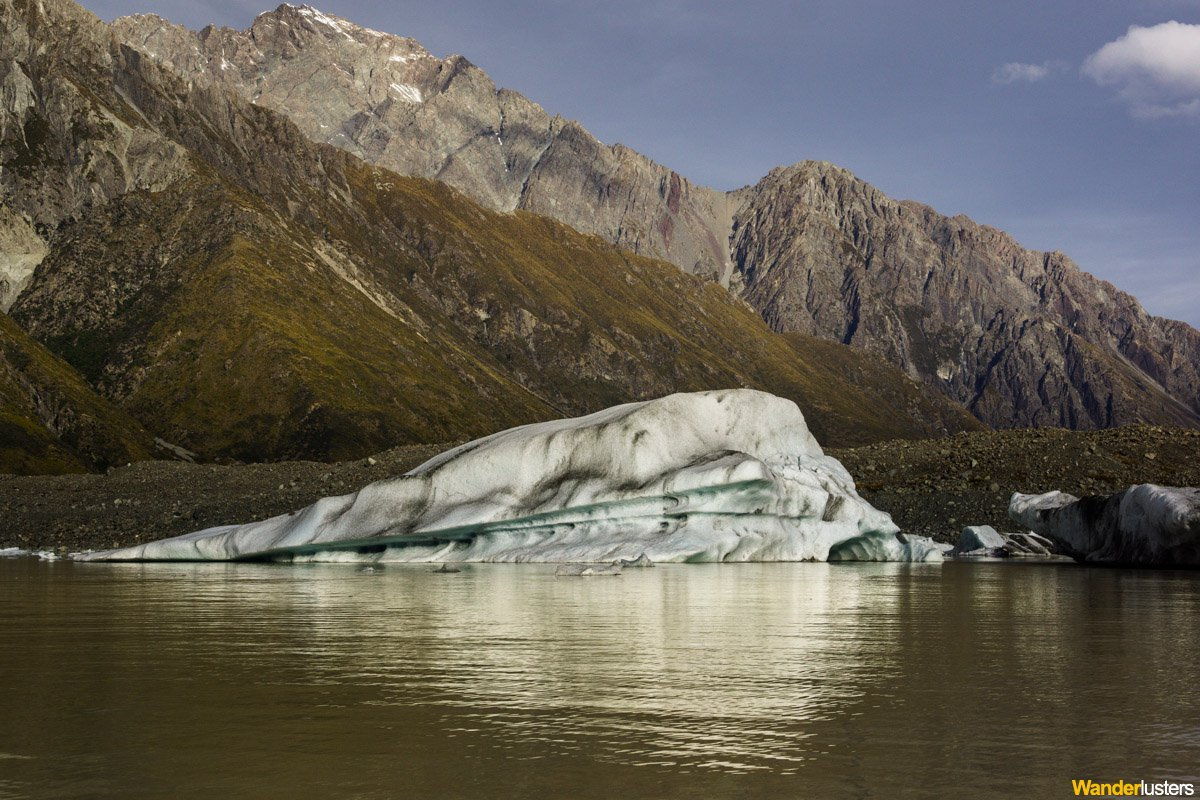Glaciers have been carving out the landscape of New Zealand’s Southern Alps for the last two million years. Like a skilled potter carving lumps of clay from his mould, Mother Nature has made light work of the surrounding greywacke rock. A composition of hard sandstone and mudstone it has shaped the backbone of New Zealand since the Mesozoic age.
While the movement of the Pacific and Australian plates deep beneath the frozen earth have played an integral role in the formation of the awe inspiring Alpine Range, glaciers such as the Tasman have bulldozed their way through the surrounding rock face, carving them away layer by layer.
The Tasman is New Zealand’s largest glacier and a visit to witness the magnitude of this gargantuan icy shelf has been one of our highlights while exploring the south.
The Tasman Glacier
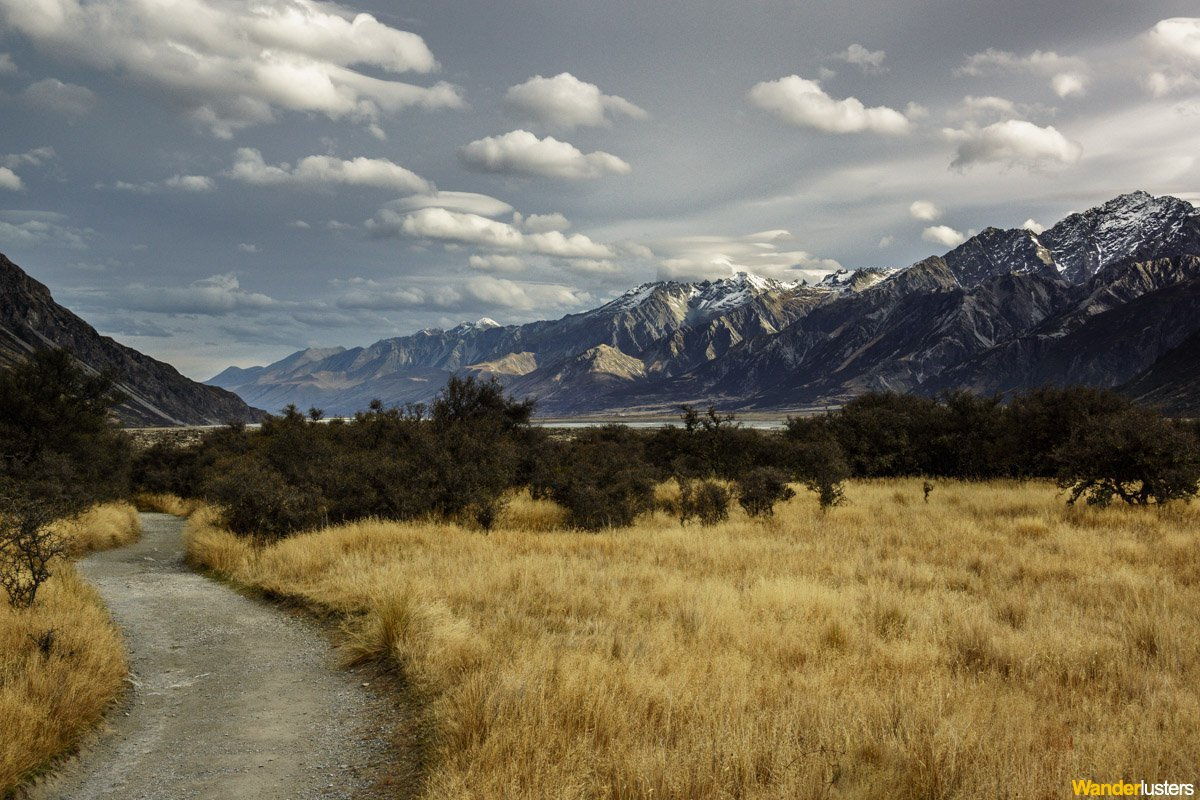
As we turn off the highway I consult the map and note that we’re now speeding down a road with only one destination.
Around 60km from the neighbouring town of Twizel the Mount Cook Road boarders Lake Pukaki and leads only to the Tasman Glacier and Mount Cook National Park.
Arriving at the Hermitage Hotel, one of the few with a licence to operate within the National Park, my heart sinks. Tourists litter the entrance, the reception and the gift shop.
Oh my goodness, what a gift shop. A large expanse of high cost mementos and Mount Cook branded keep sakes.
Perhaps this wasn’t going to be the eco adventure I had envisaged.
Handing my ticket over to the guide I climb aboard the bus and hope for the best. One 15 minute bus journey and a 40 minute hike thorough the tranquil surrounds of Mount Cook National Park and we arrive at the isolated shores of the Tasman Lake.
The terminal lake
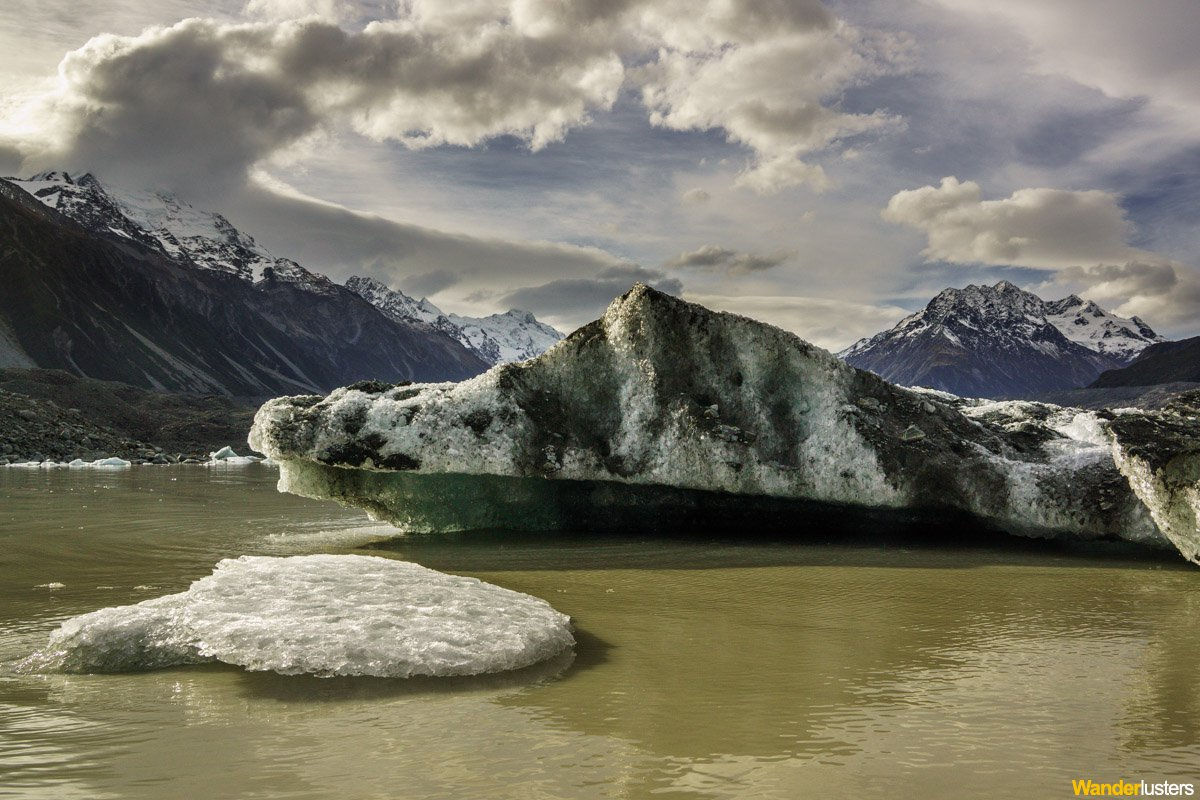
As we board the inflatable craft that will take us on a tour of the lake I am in awe of the majestic sight that surrounds me. Never in my life have I seen a glacier and I’m at a loss for words as we begin our approach towards the bobbing bergs.
A small group of just 12 we listen as our guide details the history of the glacier and the nature of its existence. Leaning out to collect a small chunk of ice from the milky waters of the lake I am amazed to hear that we’re floating above over 200m of glacial melt.
I’m suddenly very grateful for my life jacket.
The boat nestles against one of the larger icebergs and I put my hand out to touch the structure. It appears to be composed of small sections, like ice cubs in an elaborate game of Jenga, each piece integral, in a delicate balance with its neighbour.
A product of the increased temperature this crystalline formation occurs when the gases trapped in the ice are heated, fracturing the structure into visible segments.
Speeding toward the terminal face the cold air assaults my eyes and tears pour down my cheeks.
Stopping 100m or so from the icy mass our guide informs us that this cautious distance is required to prevent the boat being either crushed or sucked under the water should a section calve from the face.
The thought sends a shiver down my spine and I bury my hands in my pockets in a bid to feel some warmth.
Facts about the Tasman Glacier
At 2,700 metres above sea level the accumulation zone receives around 50 to 80 metres of snow each year which compacts under its own weight to form around 7m of glacial ice.
The force initiated by this additional weight assists in the downhill flow of the glacier over a distance of 17km until it reaches an obstruction in the form of the Mount Cook Range. From here it takes a sharp left turn and flows for a further 10km before terminating in the Tasman Lake, where the water then flows into Lake Pukaki.
The glacier moves at, well, a glacial pace covering less than 30cm of ground each day.
While the first 17km remains frozen solid and pearly white thanks to the frozen air at altitude, as the ice nears the valley floor the it dips beneath the melt line and the warmth slowly eats away, exposing the layers of debris within.
While unsightly in comparison, this debris blanket is actually insulating the glacier and slowing the current rate of melt.
The formation of the Tasman Glacier
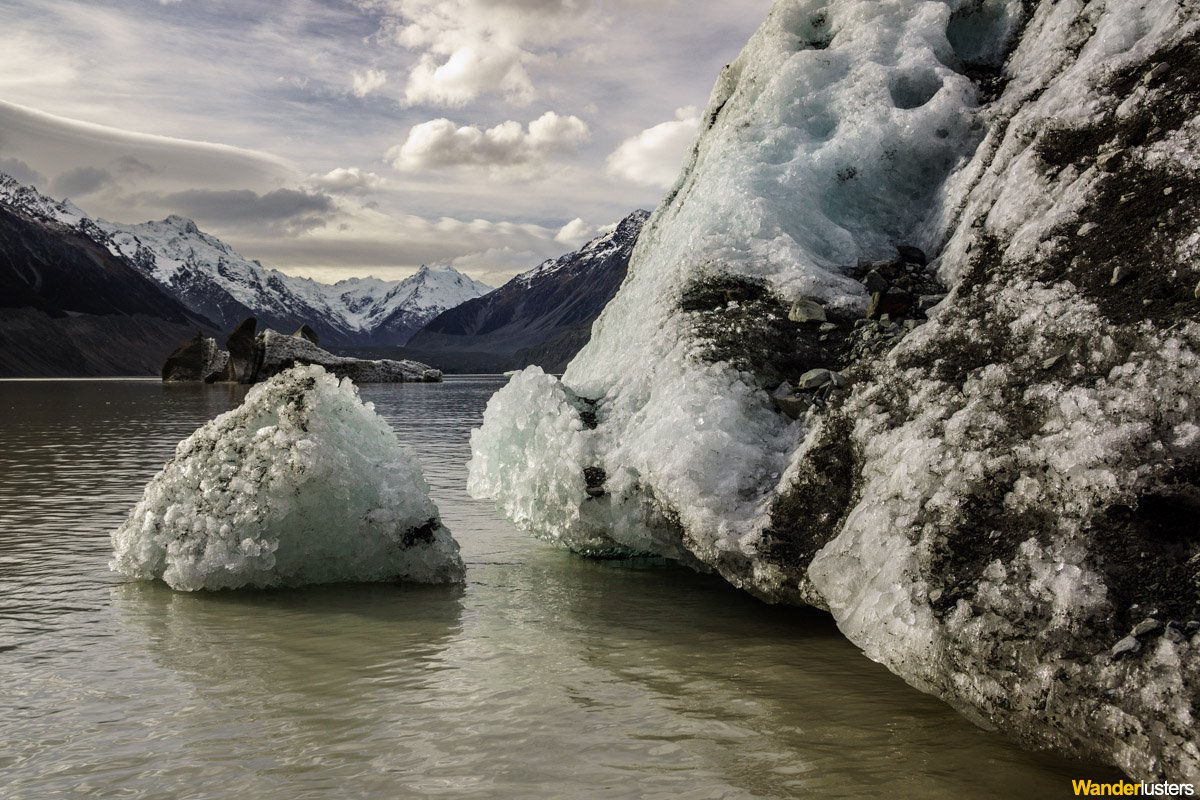
As the continual uplift of the surrounding range is forged by the tectonic movement below, the Tasman Glacier has been making its mark on the earth above.
Snow that falls on the accumulation zone atop the ice is compacted over time and forced down through the valley, scooping up tonnes of debris and rock in its perpetual icy flow.
It takes over 300 years for the compacted snow to move through the glacier and reach the terminal lake, and it is this repeated movement that has contributed to the architectural form of the Tasman Valley.
By their very nature glaciers expand and retreat, gradually carving away at the surrounding rock.
An ever changing artwork, the earth a canvas.
Formed over 18,000 years ago during the last ice age the glacier peaked in stature shortly afterwards and remained at a relative equilibrium until climatic change began the process of retreat.
13,000 years ago a warmer climate meant that the glacial ice melted at a faster rate than the accumulation zone could compact fresh layers atop the structure.
As the rate of the melt increased so too did the deposit of the debris collected from the sides of the valley. Known as ‘Moraine’ the current depth of the debris covering the valley floor is 600m, almost the depth of the glacier itself.
Growing at a rate of around 80m each year sadly this growth is not enough to combat the speed of retreat. With the increased climatic temperatures and levels of carbon dioxide in our atmosphere, the ice is retreating at over 300m each year.
Melt water rising
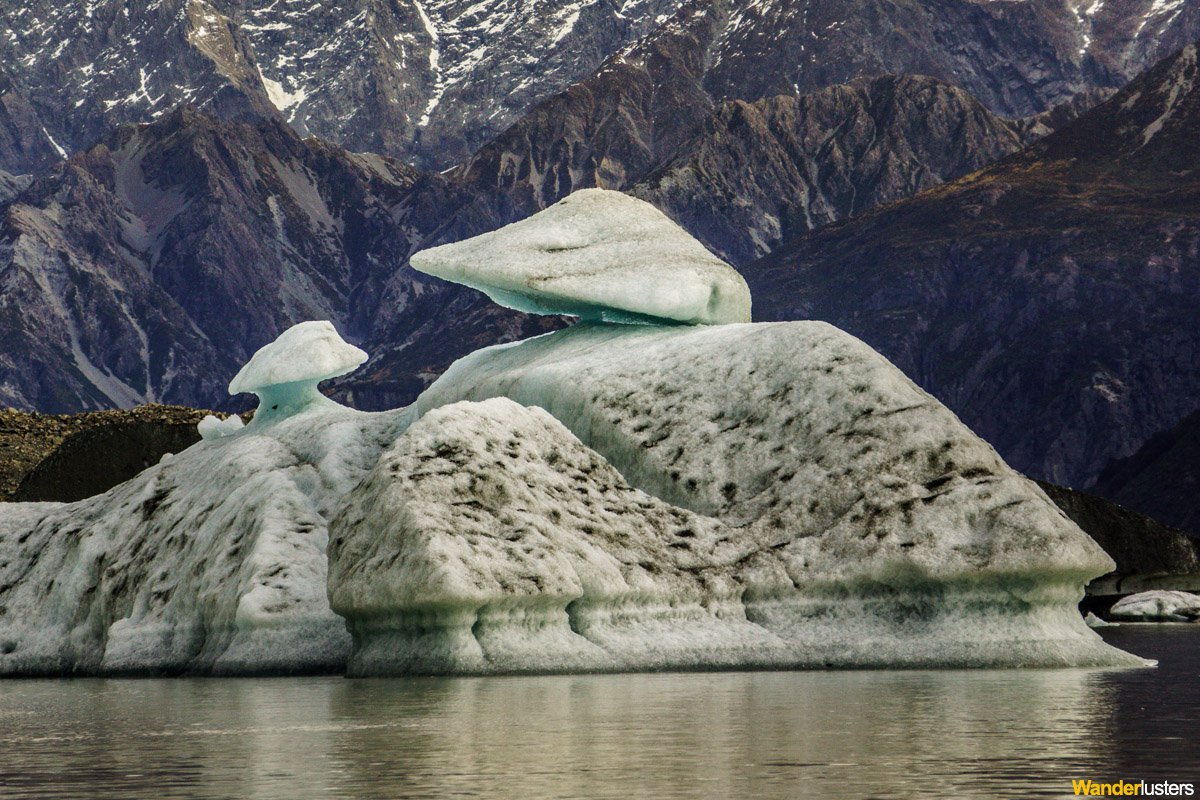
In the mid 1900s the rate of the melt increased significantly and what was once a small puddle soon became a great lake. Covering much of the ground that was once concealed by ice the lake is now over 200m in depth.
Feeding into Lake Pukaki, dubbed the ‘Blue Lake’, it is renowned for its distinctive azure waters that juxtapose the surrounding snow-capped mountains in winter.
Triggered by particles of ground rock flushed down from the sides of the mountain, this fine sediment absorbs all the colours of the spectrum apart from blue.
Thus refracting a bright cobalt haze within the glacial waters.
Watching calving icebergs
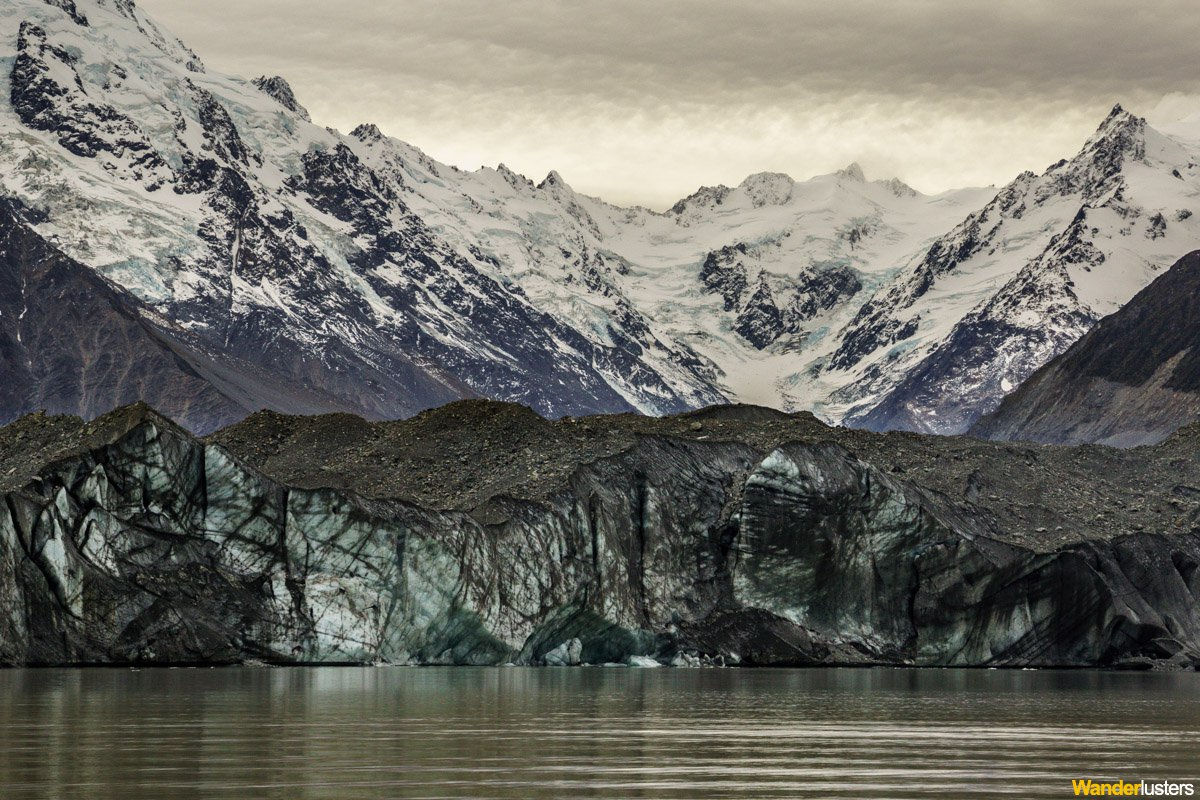
Although the glacier sits on a thin layer of melt water the terminal face is fixed to the valley floor. While just 30m is visible above the water line of the terminal lake, the face descends into the milky water to a depth of over 200m below.
Due to the state of melt currently affecting the ice the glacier regularly sheds huge chunks of ice from this terminal edge. This process is known as calving and it is responsible for the bobbing icebergs that litter the neighbouring lake.
Calving occurs when the ice weakens and it can happen unannounced.
The violent earthquake of 2011 which tore Christchurch apart caused a gargantuan section of ice to break free from the main structure. The remains of which offered visitors quite the scenic view.
The life cycle of an iceberg
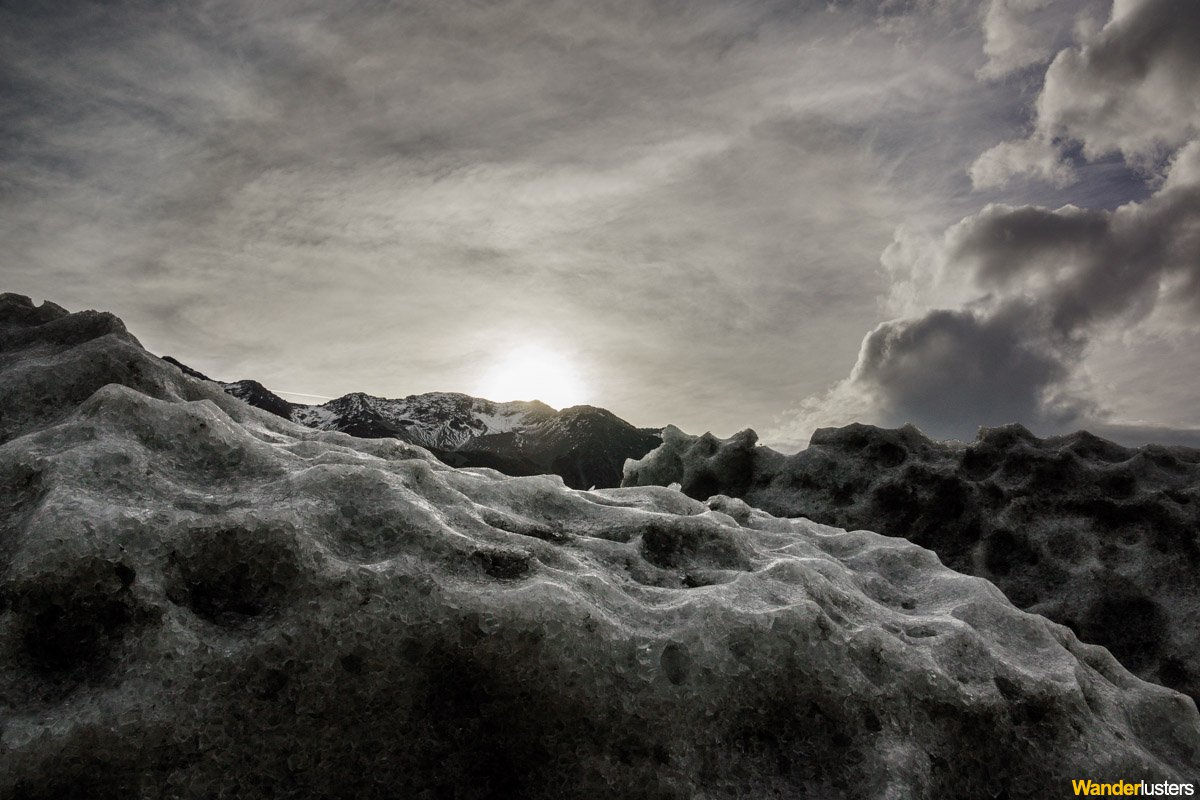
1 // Ice buried deep within the glacier is at its peak. Extremely dense it appears as though steel blue in colour. This ice is strong, it is stable. Protected by the outer, exposed layer this ice is not a risk of melting or erosion from the elements.
2 // Once calved from the main glacier the ice is at the mercy of the earth’s atmosphere. The sun, wind and rain all chip away at its integrity, slowly forcing it to shed layer upon layer into the surrounding lake.
The gases trapped within the ice crystals begin to heat up and accelerate the melt. The ice turns from steel blue to white.
3 // As the melt runs into the lake the debris, once suspended within the ice, is exposed and forms a grey layer over the icebergs surface, acting only to muddy its appearance and hasten the melt.
4 // Reaching over 5cm in depth the debris begins to act as an insulator and the melting begins to slow.
Returning to the shore
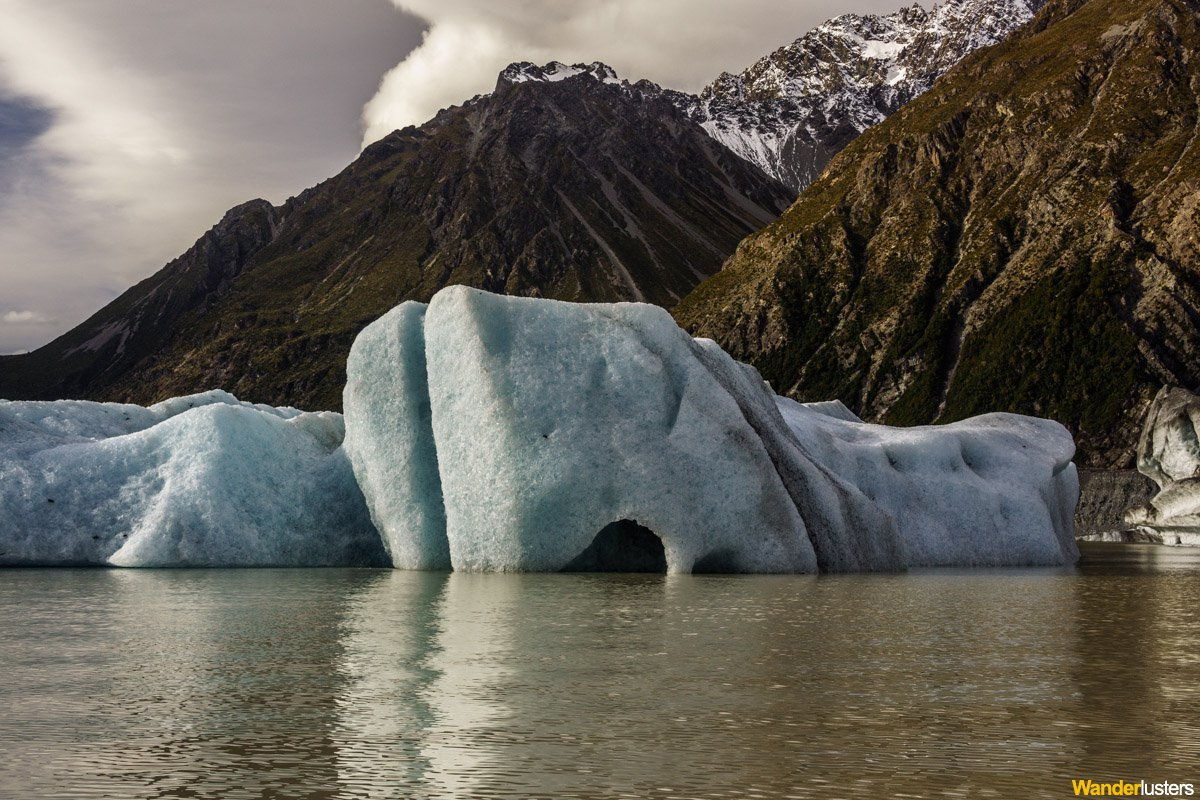
While the tour left me in awe of New Zealand’s Alpine Range I also felt a little bereft at the prospect of losing such an integral part of the landscape.
Would my grandchildren have the opportunity to visit the glaciers of our earth or would they be just a distant memory, no longer discussed during geography but also their history class?
Since my visit I’ve been fortunate enough to watch the ground breaking documentary ‘Chasing Ice’ in which National Geographic photographer James Balog catalogues the retreat of a number of glaciers in the Northern Hemisphere.
A poignant piece of film it explores the immediate effect of what has been dubbed ‘climate change’, a widely disputed ‘theory’, yet proven by the dramatic footage and statistical data collected by Balog and his team.
Should you have the chance to visit a glacier I urge you to do so.
For all too soon the opportunity may have passed you by.
How to get to the Tasman Glacier
I joined the crew of Glacier Explorers, the sole operator licensed to offer guided tours of the lake, for their afternoon excursion. I have to say it was thoroughly enjoyable and made even more so by our friendly and knowledgeable guide.
However, the Tasman Lake and the glacier itself are all within the bounds of the National Park and thus subject to continual public access, so if you’ve the strength to carry your own canoe to the water’s edge then feel free to conduct a self guided visit.
Should you choose this very adventurous option it is advised that you remain at a safe distance from the icebergs and the terminal face, and of course, wear a life jacket.
For the road trippers amongst you there are two camp sites, the Department of Conservation camp site and Glentanner Park. The latter being the only one of the two with powered sites.
While there are a number of motels and a few larger hotels set close to the base of Mount Cook be prepared to pay through the nose for a room with a glacial view and almost just as much for one without.
✈ ✈ ✈
What is your take on the current climate change debate? Have you ever visited a glacier? Share your comments with us below.

